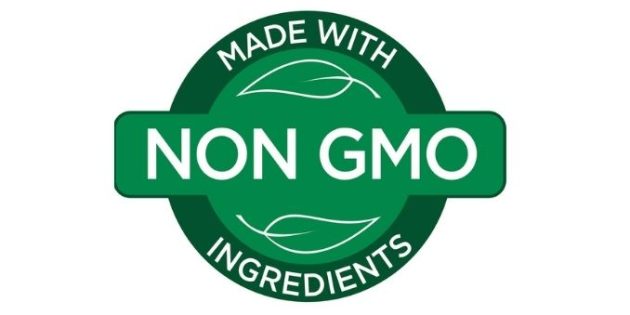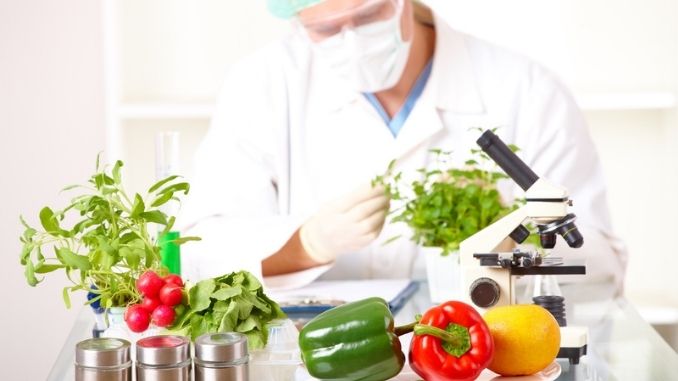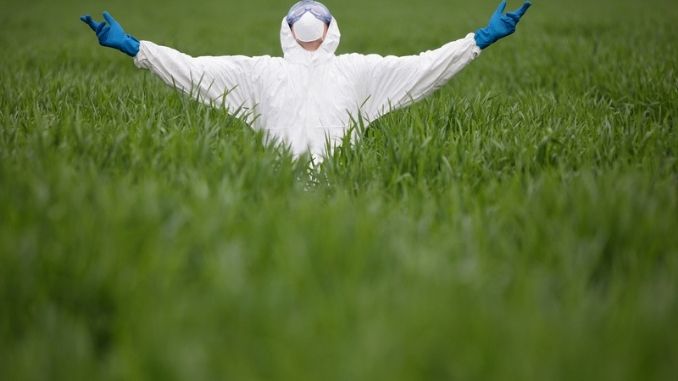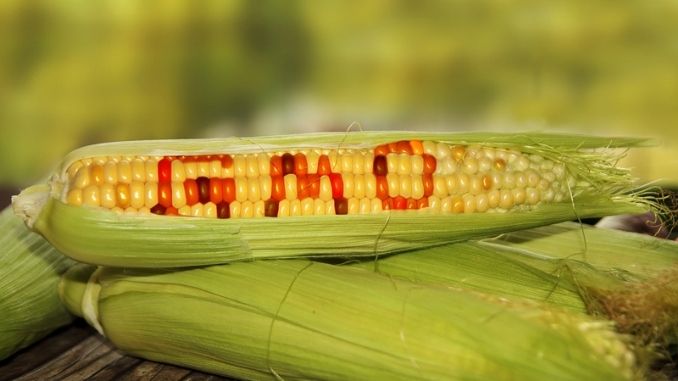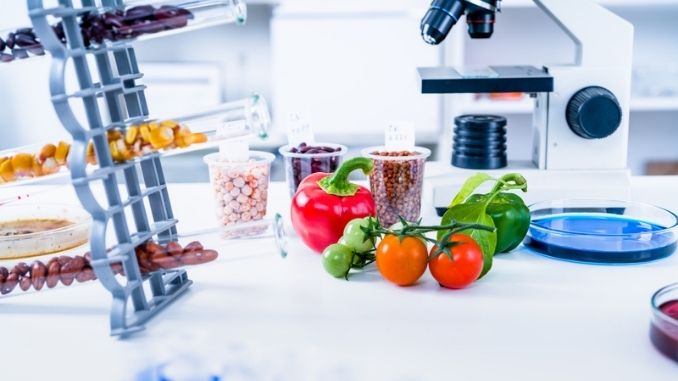Technological advancements, recently developed technologies, and methods using other newly found scientific findings are a constant in the production of many everyday items. But did you know that some of these scientific outcomes are used to produce genetically modified crops and animals? Research and technological advancements have paved the way for genetically modified organisms, commonly called GMOs. Genetically modified organisms have been in the limelight since the 1980s, which has led to countless controversies.
What is GMO?
GMOs are organisms or plants whose genes have been artificially changed in laboratories. Farmers and ranchers have incorporated gene modification on plants and animals into their farming and livestock production to enhance food quality and crop yield. The technology, termed genetic engineering, means that new DNA is transferred into plant cells to create new or different characteristics in genetically modified organisms. This process combines bacteria, viruses, and animal genes that do not occur naturally. For instance, this technology aims to address the increasing problem of food shortages in many countries. By shortening crop cycles and altering the environment in which a crop needs to thrive, different foods would be made more accessible in dry lands.
History
Selective breeding or artificial selection by Charles Darwin is the process that our ancestors practiced, although they had no clear idea of what genetics was all about back then. They chose organisms with the most desired traits, then combined them to propagate these traits to their offspring. The most evident alteration in plants happened through the artificial selection of corn. Corn, or maize, started as a wild grass called Teosinte. Teosinte had very tiny ears with few kernels. Because of selective breeding, Teosinte now has more prominent ears and noticeably more seeds, known today as corn. Though GMO technology is quite different than artificial selection, this method is still the origin of modern processes and the first example of genetic modifications.
The GMO technology was first developed in 1973 by Herbert Boyer and Stanley Cohen, who successfully engineered the first genetically engineered organism. This breakthrough opened up new research possibilities and simultaneously created essential concerns, including the potential consequences on our natural habitat, safety for human consumption, and possible adverse effects on human health. This is because alteration of the genes is prone to a mutation that will eventually lead to irregular changes in the DNA and its genetic structure.
Common Genetically Modified Crops in the United States
Many foods you find in grocery stores today contain genetically modified ingredients. This is roughly 80% in the US, with at least 90% of soy, cotton, and corn grew using genetic technology. Farmers commonly genetically engineer the following crops:
-
- Corn
- Soybean
- Cotton
- Potato
- Papaya
- Summer squash
- Canola
- Alfalfa
- Apple
- Sugar beets
These crops are primarily modified to make them resistant to pests and herbicides, create greater crop yields, stabilize growth in harsher conditions, and generally make farming easier. Despite the claims and research findings of known and respected organizations that GMOs usually are safe for consumption and a very sustainable way of producing crops, the controversy about the safety and potential health risks is still ongoing.
Advantages
Genetically modified organisms or GMOs are designed to provide solutions to some existing problems encountered in the farming and livestock industries. This includes:
Improved Quality
GMOs may have improved the color or longevity of some foods. They might also remove the seeds of some foods or make the plant less susceptible to changing climates. Scientists have also enhanced the nutrients of these modified plants.
Avoid Crop Devastation
Because of GMOs, some plants have been saved from extinction. One example is the Hawaiian Rainbow Papaya. When the ringspot virus became widespread and became a destructive disease of papaya, researchers developed the rainbow variety of papaya. This modified gene made the papaya plants resistant to the ringspot virus.
Lowering the Costs of Foods
The chemicals and water needed for GM plants are often lower than their counterparts, thus lowering the price of these products in the market.
Can Reach Inaccessible Regions in the Word
GMOs lengthen the shelf life of foods, allowing them to be transported to far-reaching areas without spoiling quickly. This makes them more readily available to communities in need.
Maintain and Improve Nutritional Value
Some plants are altered to improve their nutritional value or address existing dietary deficiencies. One example is rice. Scientists developed golden rice, which is high in beta carotene, to help prevent blindness, especially in regions where local foods are deficient in vitamin A.
Increase Yield and Make it Easier to Cultivate
Making crops resistant to pests and extreme weather conditions allows for more excellent crop production and makes cultivating fields in problematic surroundings easier.
Alleviate Hunger
Hunger and malnutrition are rampant around the globe. GMOs have helped feed hungry and malnourished people.
Disadvantages
GMOs have improved the food industry immensely, but despite these proven benefits, ongoing concerns about the safety of human consumption and the long-term effects on our environment are abundant. Here are some of the known harmful effects of GMOs.
Allergic Reactions
As discussed, we develop GMOs by altering the genetic makeup of an organism or a plant, making it favorable to certain conditions. This process is believed to create allergic reactions in many individuals. GM crops may have allergens that, when consumed, stimulate an immune response in the body.
Resistant to Antibiotics
Antibiotic-resistant genes generally make GMOs resistant to pests and resilient, making this possible. This procedure could contribute to the development of antibiotic-resistant bacteria, although this has not yet been validated.
Cancer Contributory
Concern has been raised linking GMOs to cancer. DNA mutations cause cancer, and considering the methods used in GMO creation, many people fear that eating GMO foods might affect human DNA.
Environmental Hazard
GMO crops have helped farmers; however, scientists have proven some adverse environmental impacts.The following are significant concerns that have been observed.
1. Herbicide & Pesticide Resistance
There has been a significant increase in sales of herbicides and pesticides in the USA and Canada. Almost all genetically modified crops are engineered to be resistant to specific herbicides because this. This becomes an environmental concern because the increased use of these herbicides might become ineffective over time.
2. High Concentration of Toxins in Soil
Toxicity is a huge concern regarding GM crops. One example is BT Corn (Bacillus thuringensis Corn) for its pest-controlling ability. The toxins that control pests in corn might also be released into the soil. Excessive toxins in the ground will also kill the bacteria essential for the plant’s growth; if this happens, the earth will become unhealthy for planting.
3. Disturbance in Ecosystem
Many people see GMO production as having a high risk of changing our biodiversity.The new characteristics developed from a modified crop disrupt the natural gene flow. Gene flow disruption will produce more weeds because they breed rapidly and compete with other crops.
4. Contamination
Possible contamination of GM crops can occur through pollen spread, seed escape, and mixing of food and feed. We consider this type of contamination living pollution that can self-replicate.GM contamination affects farmers first. Once released into our environment, genetically modified organisms (GMOs) can be difficult or impossible to control or recall. Human error, biology, pollinator and wind movement, extreme weather events, and other factors make GM contamination possible.
5. Superweeds and Superbugs
Some plants and insects have become resistant to the drugs that kill them. These bacteria have become an environmental threat because they become more resistant over time, requiring even more pesticides and herbicides.
Genetically modified organisms have pros and cons. Many people consider the pros the solution to many challenges in the farming and livestock industries. However, it is impossible to ignore the concerns over human safety and environmental risks. The debate surrounding GMOs is strong. As more studies are being conducted, there is a definite need to be cautious with the use of GMOs.
If you’re looking for safe, all-natural ways to boost your immunity, click here for more details.
